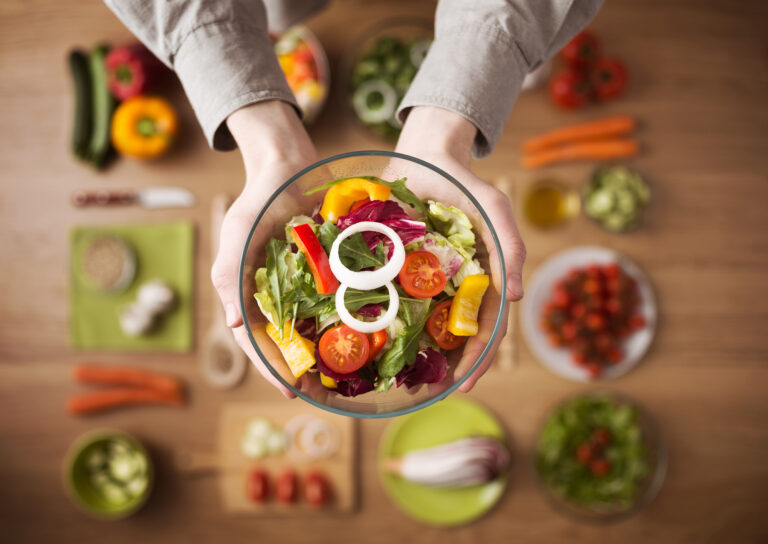
How to Add More Plant-Based Meals
Written by: Foodom, posted on 02/25/21
Over the last few years, you’ve probably been hearing more about the benefits of a plant-based diet. If you aren’t familiar with what that might entail, here is a definition: Plant-based diets focus on eating mostly plants such as fruits, vegetables, tubers, seeds, legumes, and grains. People following a plant-based diet typically avoid animal products such as beef, poultry, fish, eggs, and dairy—or eat them only in small quantities.
Some people choose to transition fully into a plant-based diet, while others may choose one or two days a week to eat plant-based. How you implement this way of eating is entirely up to you. Studies show that people that incorporate even small amounts of more plant-based foods than their normal diet can reap many of the benefits below.
Benefits of a Plant-Based Diet
Why eat a plant-based diet? Here are some of the benefits:
- It can lower blood pressure, and reduce your risk of cardiovascular disease
- It can help lower your risk of Type 2 diabetes and high cholesterol
- It can help you lose weight (if quality plant-based foods are eaten)
- Diets rich in vegetables, fruits, and nuts can reduce your risk of cancer
- It helps reduce toxic food contaminants like hormones and antibiotics that can remain in animal fats
- It shows compassion to animals and reduces greenhouse gas emissions from livestock
How to Start Eating Plant-Based
There are no hard and fast rules about how you begin your transition to plant-based, but most nutritionists agree that easing into this style of eating is usually the most successful.
- Give Meatless Mondays a try or challenge yourself to eat two to three meals each week that do not include meat or dairy.
- Make healthy swaps. You can still eat almost all of your favorite foods when you follow a plant-based diet—you just have to make a few clever swaps. For instance, enjoy pizza with a whole-wheat crust and colorful veggies instead of meat and cheese, or use meat replacement products like the Beyond or Impossible lines that are now available at most grocery stores.
- Incorporate more beans. Beans provide protein and fiber which gives you the sense of fullness and satiety that you may have enjoyed when you ate meat. Stock up on a variety of canned or dried beans.
- Save money with frozen and bulk foods. Fresh fruits and vegetables are flavorful and have the best texture. But frozen foods are usually just as nutritious. Keep frozen berries, peas, corn, and other veggies on hand to throw into recipes. Buy seeds and nuts in bulk.
Sample Shopping List for Meal Prep
The following shopping list offers suggestions for getting started with this eating plan. Note that this is not a definitive shopping list and you may find other foods that work better for you.
- Dark, leafy greens (spinach, kale, Swiss chard, bok choy, arugula)
- Veggies (broccoli, cauliflower, Brussels sprouts, sweet potatoes, bell peppers, eggplant, carrots)
- Fruits (oranges, berries, bananas, apples, avocados)
- Whole grains (oats, quinoa, barley, amaranth, brown rice)
- Dried or canned legumes (black beans, lentils, chickpeas)
- Tofu and tempeh
- Nuts and seeds (walnuts, almonds, cashews, chia seeds, flax seeds)
- Nondairy milk (oat, almond, soy)
- Tahini
A Wide Variety of Plant-Based Meals Cooked by In-Home Chefs
Another option is to use Foodom for your weekly meals. We have a large variety of vegetarian and vegan meals available. It’s a great way to try a new way of eating. Since it’s cooked by a chef, they know how to add just the right seasoning to turn what you may have thought was a boring veggie into your new favorite dish!
Check out some of our favorite vegetarian and vegan recipes!
Also, feel free to ask the chef to make one of our regular recipes plant-based by swapping out the meat for a substitution like tofu, beans, or a plant-based meat replacement.


